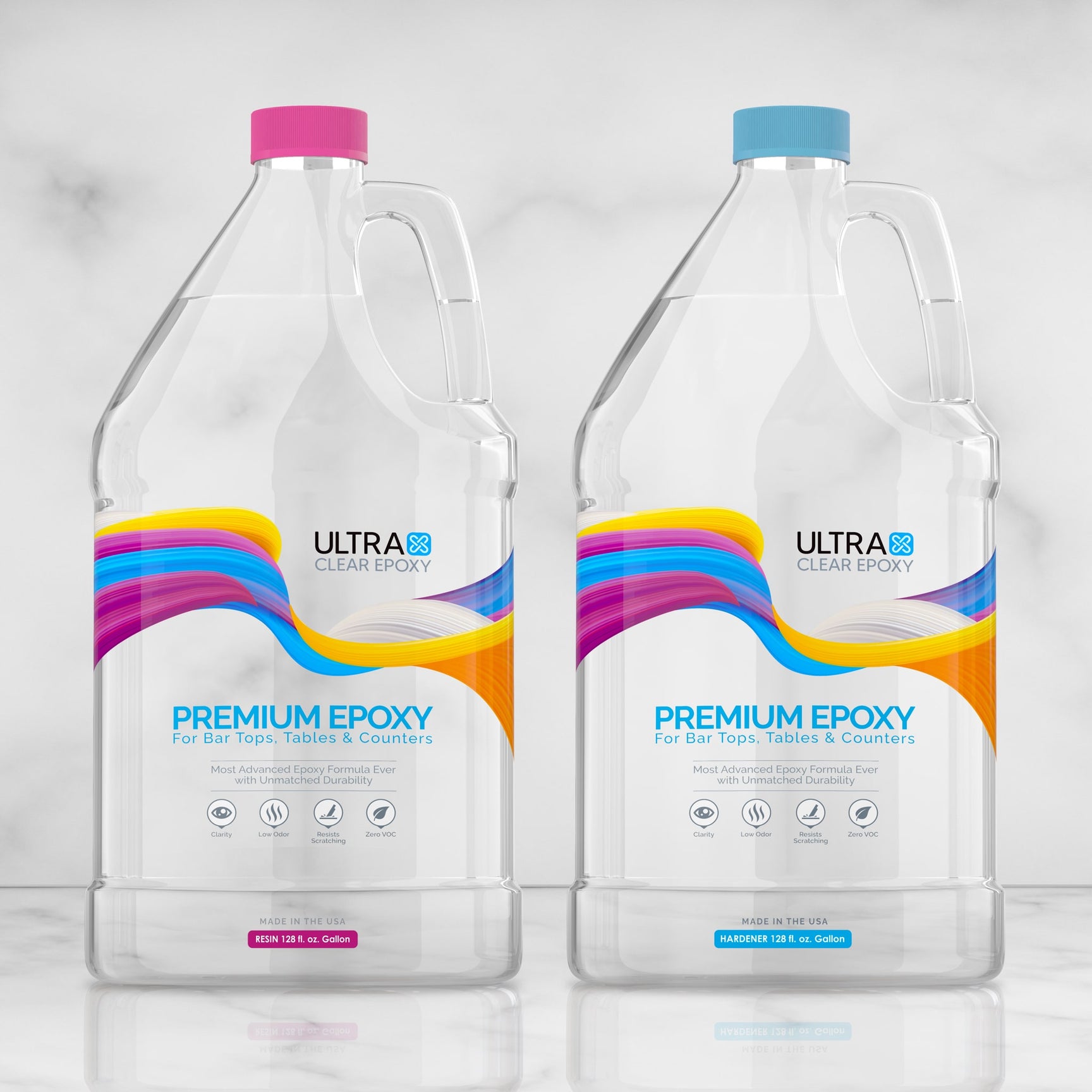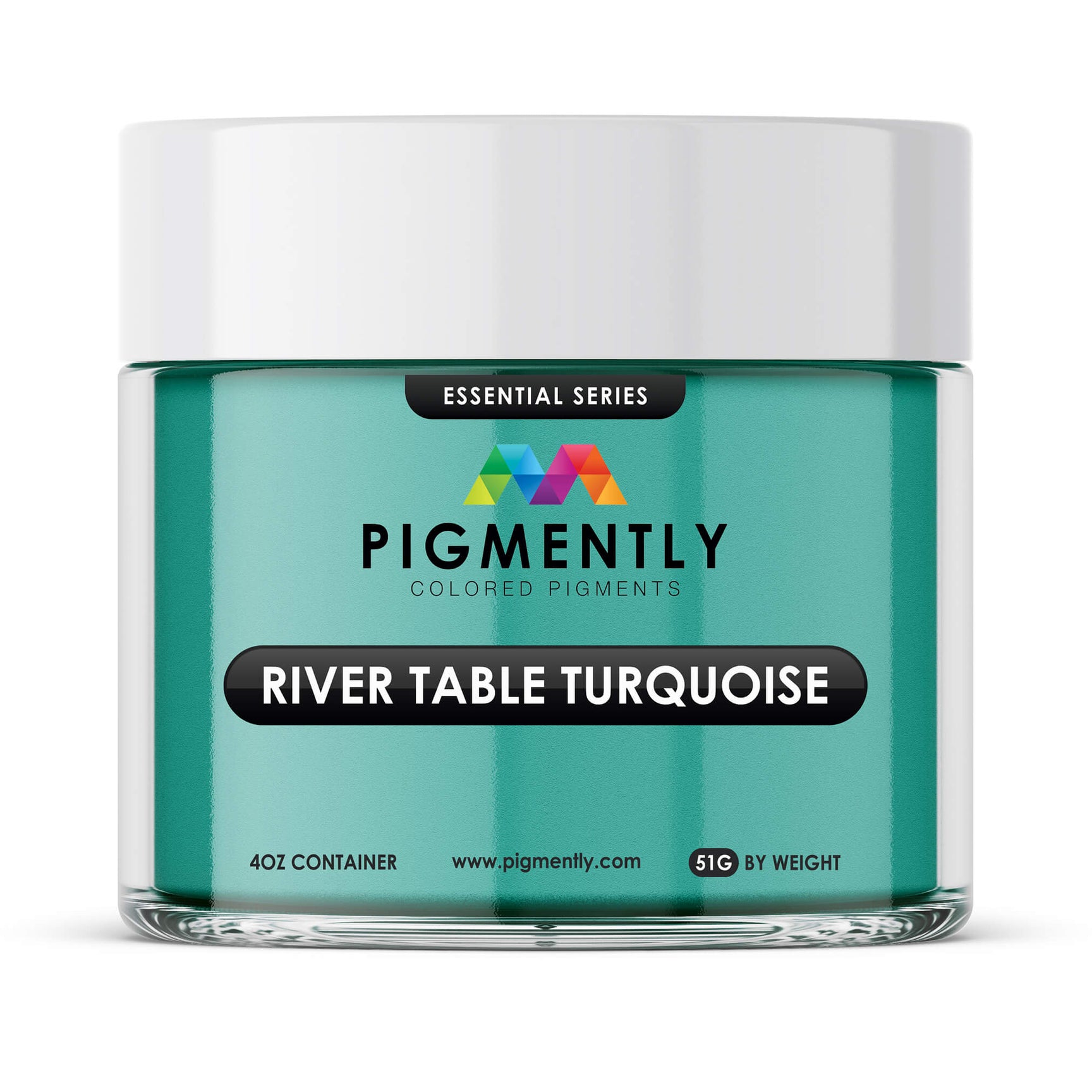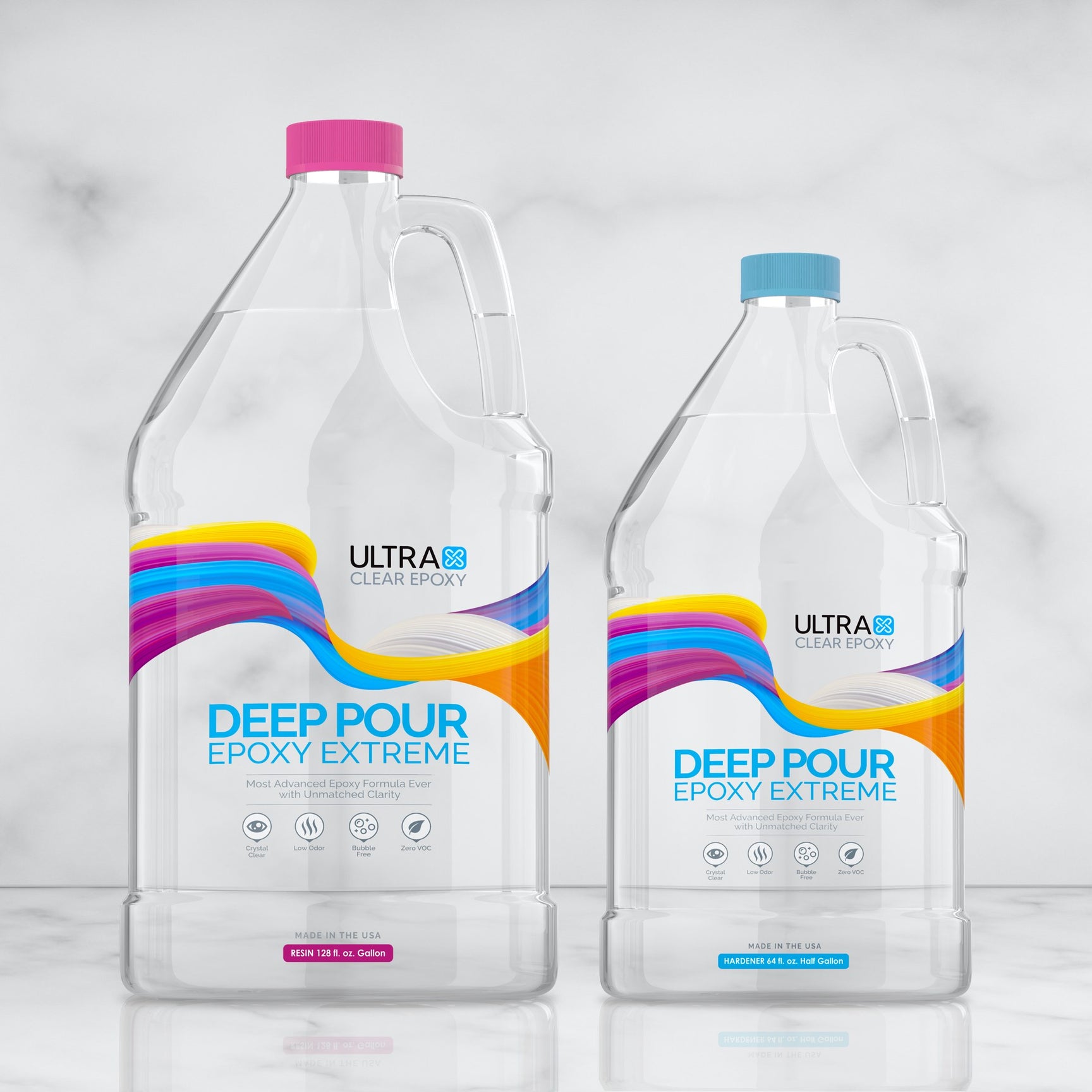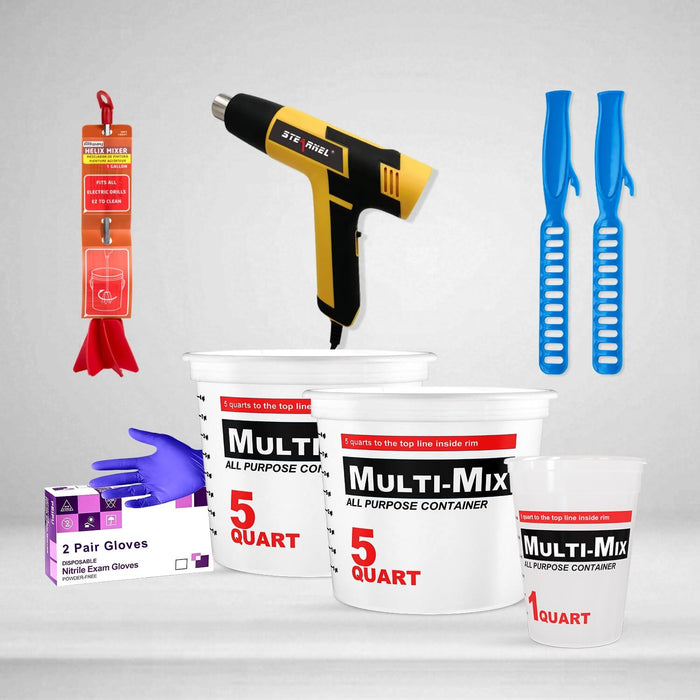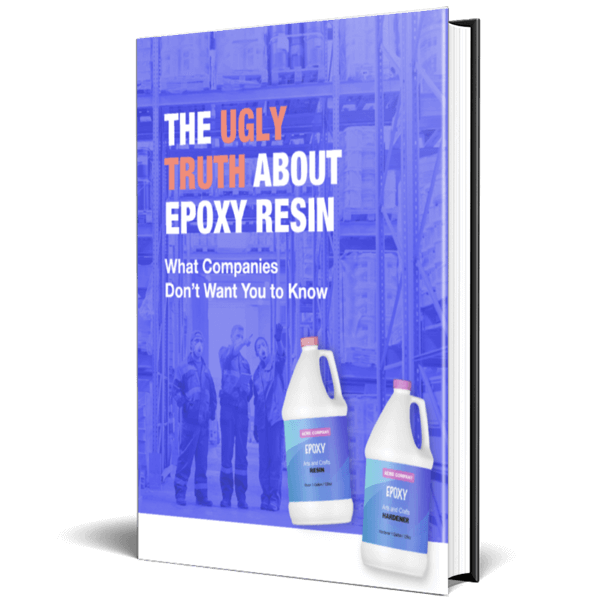Among arts and crafts, DIY epoxy is still considered a relatively new hobby. In the last two decades, the internet has brought significantly increased awareness of epoxy resin as a wonderful sealant for table tops, bar tops, and countertops. And yet there are many users who don't realize just how versatile epoxy resin can be.
In this article, we'll showcase 5 remarkable types of epoxy table tops that are possible not only by professionals but also by DIY epoxy users.
What is an epoxy table top?
Simply put, an epoxy table top is any table that has had a coating of epoxy applied as a sealant. This can be done for preservation, aesthetic appeal, or—as is often the case—both.
The most common reason an epoxy coating is applied to a table top is to protect the table's material from many types of damage. For instance, a very common table top material is wood. However, wood, though beautiful and sturdy, suffers from a lot of weaknesses—to moisture, to scratching, to cracking, warping, and splitting—and it's issues like those that sealants are meant to prevent and mitigate. And that's where epoxy comes in.
Epoxy, an unparalleled sealant
Though there are many different types of sealants, each suited for table tops in different ways, only epoxy stands tall as comprehensive and nearly impervious. With very few weaknesses and many benefits, both cosmetic and functional, no other sealant can claim such substantial protection and versatilty.
With an epoxy finish, a table top receives:
- Incredible physical protection. Scratching, cracking, denting, and more are non-issues in nearly any conventional environment with an epoxy finish.
- A waterproof exterior. Moisture damage to the substrate is fully prevented with a full coating of epoxy resin, which provides an impermeable barrier that disallows water and other liquids to pass through.
- Chemical resistance. Many types of chemicals that can damage other sealants are partially or fully mitigated by epoxy's resistance surface.
- Low-maintenance requirements. An epoxy table top requires very little upkeep, thanks to epoxy's smooth, resilient composition.
- An extensive lifespan. A high-quality epoxy will last for many years and is easily refreshed due to receptive nature that enables new layers to bond easily with older epoxy finishes when the time comes.
5 remarkable types of epoxy table tops
For many people, the emblematic epoxy table top is just a traditional dining table with a basic coating. An elegant option, but certainly not the only one.
Here are 5 types of epoxy table tops that are entirely feasible as a DIY project:
-
Standard epoxy table tops - The one and only original. Iconic and the easiest type to achieve.
-
Epoxy river tables - A table top with a vein of epoxy that runs through the substrate like a river.
-
Pure epoxy table tops - No substrate, just epoxy. These highly customizble tables are made entirely from epoxy.
-
Ocean-themed table tops - A table top that uses pigments and epoxy to create the illusion of waves on the ocean or at a beach.
- Cork table tops (and similar variants) - Epoxy table tops made using numerous small objects that are then bound together by a full coating of epoxy resin in the shape of a table top.
Let's take a closer look.
Table type #1: The standard epoxy table top
A standard epoxy table top typically consists of a substrate material (often solid wood) that is coated with a layer of epoxy resin. The epoxy resin is poured onto the surface of the table in a thin layer, called a flood coat, which is usually around 1/8 to 1/4 inch thick, then allowed to cure.
The resin is often left clear, providing a clear glasslike finish to the table top. It can also be tinted with pigments to give it an elegant infusion of color. Standard epoxy table tops can be dining tables, coffee tables, and end tables—anywhere that a table top with a durable and decorative finish is desired.
The design of a standard epoxy table top is typically simple and flat, with the focus on showcasing the natural beauty of the wood or other materials beneath the epoxy coating.
Standard table tops are overwhelmingly made with a table top epoxy such as our UltraClear Bar & Table Top Epoxy. This is because good table top epoxy is self-leveling, highly resilient, and completely transparent for a beautiful, long-lasting finish.
Table type #2: The epoxy river table
Epoxy river tables are a step up from standard table tops in terms of complexity, but they deliver a outstanding visual effect through their epoxy "river" veins.
These table tops are generally crafted using two slabs of wood place parallel to each other, with a deep layer of epoxy resin running through the middle of them. This layer is called the river vein and is often tinted with powder pigments of the owner's preference.
Once the river vein has been fully applied, it's often given a few hours to cure, then the entire project is topcoated with a final layer of table top epoxy.
For a river table, two types of epoxy are recommended, one for the river, the other for the heavy-duty topcoat. These are:
- UltraClear Bar & Table Top Epoxy—the topcoat.
- UltraClear Deep Pour Epoxy—the river vein.
Table type #3: The pure epoxy table
A pure epoxy table will have minimal or no substrate surface area. This type of table is made almost entirely with epoxy resin, and often features a theme using embedments or various colorants.
These are one of the rarest types of epoxy tables, owing to the time and effort it takes to make one with a pristine, clear finish. Careful, deliberate bubble removal is especially important to achieving a beautiful finish with pure epoxy table tops.
Pure epoxy table tops should be crafted with UltraClear Deep Pour Epoxy, which supports the thick layers (up to 2 inches per layer) necessary to complete such a project, and may require multiple layers to achieve the desired size.
Table type #4: The ocean-themed epoxy table
Fourth on our list is the ocean-themed epoxy table. Technically this can be extrapolated to themed table tops in general, but the ocean theme is by far the most prevalent.
An ocean-themed epoxy table involves using tinted epoxy and a tool—typically a heat gun—to generate the "motion" effect. This potential for this visual is incredibly diverse with unique designs possible depending on the how the application method is employed.
Table type #5: The cork epoxy table top
Perhaps one of the most satisfying epoxy table types is the cork table top, as well as variants on that very concept. This type of table top involves careful placement and adhesion of numerous corks to create an aesthetically pleasing pattern, which is then encased in a thick layer of epoxy resin.
Once this layer subsequently cures, the newly-crafted table can be used as intended.
Other common variants of the cork table top include the epoxy bottle cap table top and the epoxy penny table top, though almost any object is viable as long as its size is reasonable. Tables with shells, pebbles, marbles, even LEGO pieces or cartridges are all concepts we've seen.
The ideal epoxy for this kind of table top varies by design. In most cases, UltraClear Deep Pour Epoxy is better suited for its thick layer support. Some situations, though allow for the stronger UltraClear Bar & Table Top Epoxy to be used, this is common for coin-based table tops. Since coins are rather thin, it's possible to achieve proper finish even with the thinner layers necessitated by the viscous table top epoxies.
UltraClear Epoxy: Resin Products of Unmatched Quality
As with any material, epoxy resin has both pros and cons. But no other sealant has so few weaknesses, and that's what puts epoxy above all other options when it comes to being a finish for high-traffic fixtures and furniture such as countertops, table tops, and bar tops. And among epoxy resin products, there are none that match the quality of UltraClear.
You can find our UltraClear Epoxy products on the following pages:
- UltraClear Bar & Table Top Epoxy: The classic choice for bar tops, countertops, and table tops. Rock-solid, waterproof, and crystal-clear.
- UltraClear Deep Pour Epoxy: Our deep pour casting resin. Ideal for thick layers, such as those needed for river tables.
- UltraClear Art & Craft Epoxy: Our arts and crafts resin, designed for smaller artistic endeavors which typically involve resin molds and require a bit more fluidity than bar top epoxy.
With high chemical and physical resistance, UltraClear resins can withstand and endure many forms of wear and tear without breaking a sweat or showcasing any cosmetic damage.
Plus, in addition to its ease of application, they also require little upkeep to maintain its pristine appearance. With a high-quality epoxy finish, you can expect a minimum lifespan of 7 years, with no need for reapplication. Beyond that, it's a breeze to renew that coating, requiring only a light sanding and a fresh layer of epoxy.






